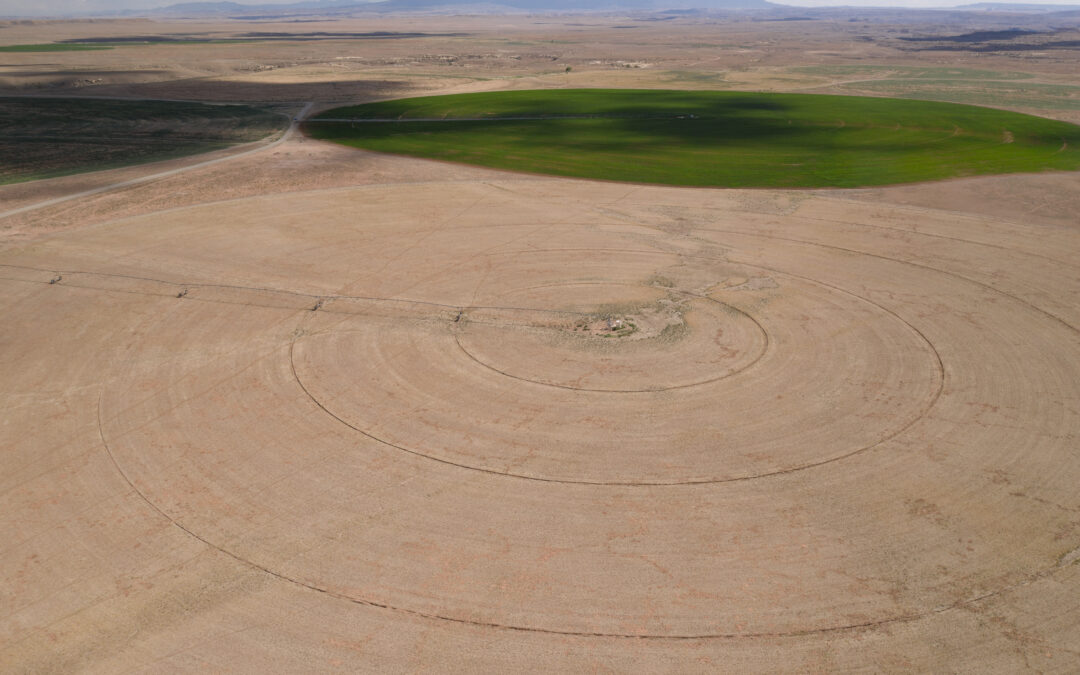Farmers, ranchers and other water users in four Western states, including Colorado, are cutting back on water use because of low flows through the Colorado River Basin.
Less than half the normal amount of water flowed into Lake Powell from the Upper Basin states — Colorado, New Mexico, Utah and Wyoming — this summer. Farmers in the four-state region fallowed fields and changed their crop plans to adapt to a smaller water supply. The dry summer conditions coincided with high-stakes negotiations over how the water supply for 40 million people will be managed starting in August 2026.
In the Upper Basin, officials are trying to emphasize the existing shortages that happen each year as natural water supplies are strained by a changing climate.
“The Upper Basin’s sacrifices aren’t abstract; they carry real human and economic consequences,” the Upper Colorado River Commission said in a news release Wednesday.
About 2.6 million acre-feet of water flowed into Lake Powell from the Upper Colorado River in April through July. That’s 41% of the average from 1991-2020, according to the Colorado Basin River Forecast Center.
One acre-foot roughly equals the annual water use of two to three households. It’s enough to cover a 1-acre field in 1 foot of water.
For the entire water year — from Oct. 1, 2024, through Sept. 30 — about 4.69 million acre-feet ran into Lake Powell from the Upper Colorado River. That’s 49% of the 30-year average, according to the center. It was the seventh driest year since 1963, when the center started making forecasts.
Wyoming shut off water to more than 163,000 acres of irrigated land in the state’s portion of the Green River Basin, according to the river commission news release.
“This is an extraordinary reduction with serious impacts on producers and rural communities across southwest Wyoming,” said Kevin Payne, Division IV superintendent of the Wyoming State Engineer’s Office.
Severe water shortages in Utah’s Uintah Basin, driven by Colorado River cuts, forced ranchers to reduce the size of cattle herds, raised production costs, and strained the local economy.
The San Juan Chama project in New Mexico, which provides water for Albuquerque, Santa Fe and agriculture, received 31% of its normal Colorado River supply, a 69% reduction.
In southwestern Colorado, farmers that use Dolores Water Conservancy District’s water have dealt with shortages in five out of the last eight years. In early June, water users were set to receive 30% of their usual water supply. That increased to 56% in part because of a better-than-expected June runoff, Ken Curtis, general manager of the Dolores Water Conservancy District, said.
Because of the shortages, farmers in Dolores County, Montezuma County and the Ute Mountain Ute Farm and Ranch have stopped growing crops on thousands of acres of land and struggled to bring fallowed land back into production as dry conditions continue.
“Our farmers are left with year-by-year gambles with last-second planning going late into May and limiting farmers’ abilities to make long-term, successful crop rotation planning,” Curtis said in the news release. “The Dolores snowpack is disappearing, and the historic runoff has dropped by even greater magnitudes. Water is no longer reliably available.”
The Ute Mountain Ute Tribe’s Farm and Ranch Enterprise, one of Colorado’s largest farming operations, stopped irrigating 60% of their land and laid off farm workers. The crop plan for 2025 only included the existing, high-value alfalfa needed to sustain the farm and ranch.
“We are merely surviving, not adapting,” Michael Vicente, the enterprise’s irrigation manager, said about the historic drought.
These shortages are uncompensated and involuntary, the Upper Colorado River Commission pointed out. That’s a sticking point for the Upper Basin states in the interstate discussions over how to manage the river.
The Lower Basin states proposed a plan that includes mandatory water cuts in every basin state in the river’s driest years.
Upper Basin officials say they should not have to make mandatory cuts. Each year, farmers and ranchers receive less than their legal allocation of water because of natural fluctuations in precipitation, temperature and other environmental factors.
For decades, Upper Basin water users have handled these fluctuating water supplies without getting paid for the losses, officials say.
“As Colorado River negotiations continue, Upper Basin leaders are clear,” the Upper Colorado River Commission news release said. “River operations must adapt to the actual supply and prioritize rebuilding storage to restore resiliency.”



 Print
Print